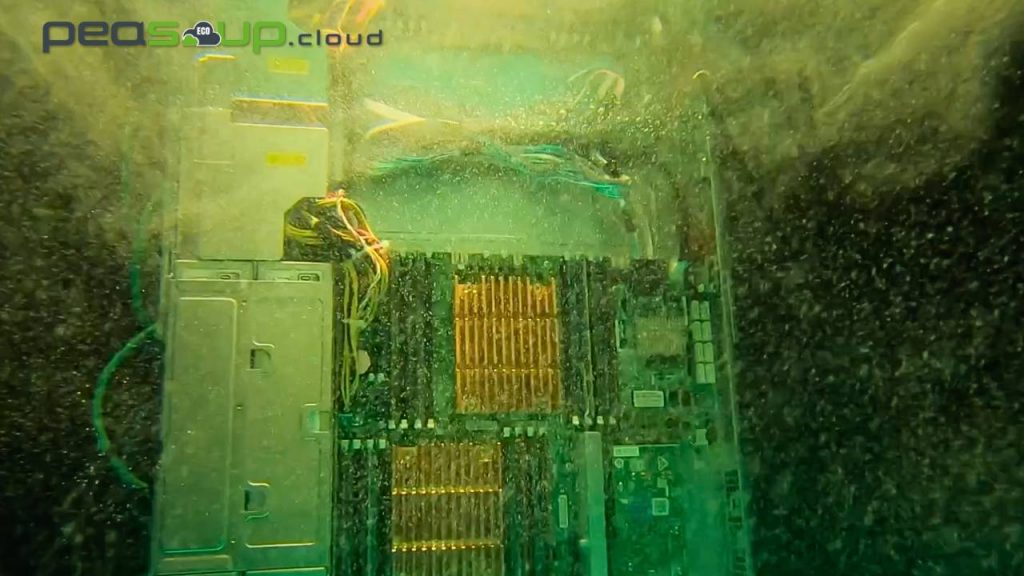The Role of AI in Proactive Maintenance in Liquid Cooling Systems
In the ever-evolving landscape of data centres, the demand for efficient cooling solutions is paramount.
Immersion cooling systems
Liquid immersion cooling systems have emerged as a great alternative to traditional air-based cooling methods, offering superior thermal management and energy efficiency.
However, to ensure optimal performance of the data cooling system, it requires sophisticated monitoring and maintenance mechanisms. This is where AI-powered analytics step in, revolutionising the way anomalies are detected, faults are identified, and issues are diagnosed in liquid immersion cooling systems.
Monitoring gaps
Liquid immersion cooling involves submerging IT hardware, such as servers, in a dielectric fluid that efficiently dissipates heat. While the method offers several advantages, including reduced energy consumption and improved hardware lifespan, it also presents unique challenges in terms of maintenance and troubleshooting. Traditional methods of monitoring and maintenance often rely on manual inspections or predefined threshold-based alerts, which may not be sufficient to address the complexities of liquid immersion cooling systems.
Analytics
AI-powered analytics, however, offer a proactive approach to maintenance by leveraging advanced algorithms to analyse vast amounts of data in real-time. By continuously monitoring various parameters such as temperature, flow rates, and fluid composition, AI algorithms can detect subtle deviations from normal operating conditions that may indicate potential issues or anomalies.
Identifying trends and patterns
One of the key advantages of AI-driven analytics is its ability to identify patterns and trends that may not be apparent to human operators. Through machine learning techniques, AI algorithms can analyse historical data to establish baseline performance metrics and predict future behaviour. This enables early detection of anomalies or deviations from expected norms, allowing operators to take preemptive action before problems escalate.
Targeted and effective interventions
Furthermore, AI-powered diagnostics can assist in identifying the root causes of faults or malfunctions within liquid immersion cooling systems. By correlating data from multiple sources and performing root cause analysis, AI algorithms can pinpoint the underlying issues contributing to performance degradation or equipment failures. This not only streamlines the troubleshooting process but also enables more targeted and effective maintenance interventions.
Predictive maintenance
Moreover, AI-driven analytics enable predictive maintenance strategies, whereby potential failures are anticipated based on early warning signs and proactive measures are taken to mitigate risks. By prioritising maintenance tasks and optimising resource allocation, organizations can minimize downtime, reduce operational costs, and prolong the lifespan of critical infrastructure components.
Combination of techniques
Implementing AI-powered analytics in liquid immersion cooling systems requires a comprehensive approach, encompassing data collection, processing, and analysis. Sensors and monitoring devices are deployed throughout the cooling infrastructure to gather relevant data, which is then transmitted to a centralised AI platform for analysis. The AI platform employs a combination of techniques such as machine learning, anomaly detection, and predictive modelling to derive actionable insights from the data.
Challenges to overcome
However, while the benefits of AI-powered analytics in liquid immersion cooling systems are undeniable, there are also challenges to overcome. Ensuring data accuracy and reliability, addressing privacy and security concerns, and managing the complexity of AI algorithms are among the key considerations for successful implementation.
In conclusion, AI-powered analytics are poised to revolutionise the maintenance and management of liquid immersion cooling systems in data centres.
By enabling early detection of anomalies, identifying root causes of faults, and facilitating predictive maintenance strategies, AI algorithms empower organisations to optimise the performance, reliability, and efficiency of their cooling infrastructure in the digital age.
As data centres continue to evolve and scale, AI-driven approaches will play an increasingly vital role in meeting the demands of tomorrow’s computing environments.

